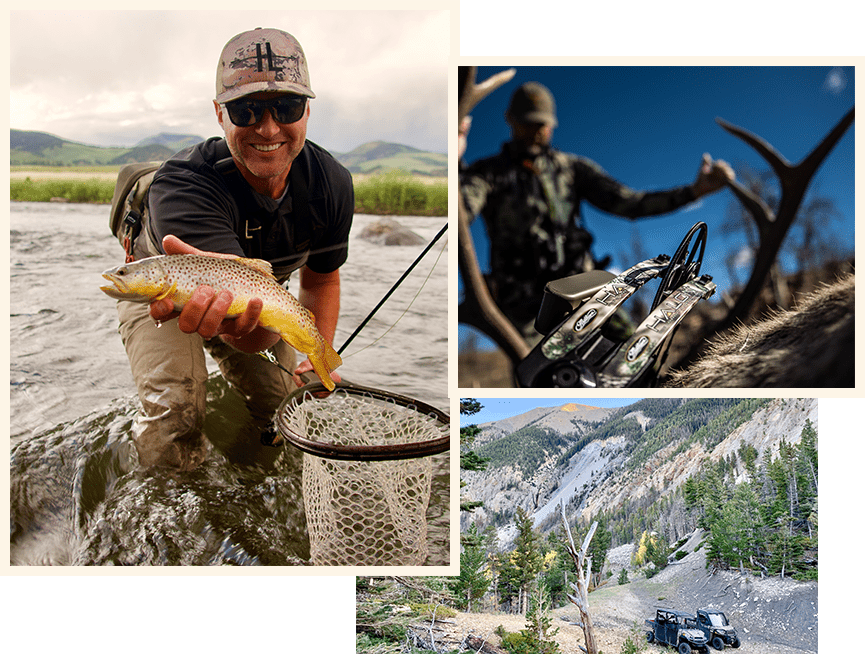Mid-Air Line Mending & Drag
Drag is the nemesis of dry fly anglers. A flyfisher can choose the right target, select the perfect fly and make an excellent cast, yet it can all be for naught if the fly scoots across the water like a speedboat running on high octane. The villain in this tragic drama is drag, which is caused by currents pulling on line and leader and forcing the fly to float unnaturally in the water. And with rare exceptions, trout will usually refuse a dragging fly.
Line mending is the technique that skilled fly fishers use to defeat drag. In its most common form, line mending means flipping the line against currents in order to prevent a downstream “belly” forming in the line and thus dragging the fly. For instance, if the current is running from left to right, the line needs to be flipped upstream to the left to create a bow against the current. This may need to be done repeatedly in the course of the fly’s drift to ward off drag.
Every flyfisher ought to know how to do line mending on the water, but three casts can be learned easily to defeat drag before the fly even lands. Mid-air line mending is easier to learn than on-water mending, and can sometimes eliminate the need for on-water mending all together.
1. The Wiggle Cast. This form of mid-air mending is most useful on an upstream or quartering upstream presentation that will cross complex small currents. All that’s necessary for a good wiggle cast is a gentle shake and good timing. On the last forward cast, begin to shake the tip of the rod from side to side (not up and down!) to form a series of s-curves in the line. Properly done, the wiggle cast will create several graceful curves in the line that the currents can pull on before all the slack is gone from your line. Experimentation will enable you to discover the ideal strength and frequency of shaking the rod tip. It’s a very easy cast to learn, and many anglers use it on almost every cast since there are almost always subtle currents on even the most placid-looking moving water.
2. The Dump Cast. The dump cast isn’t particularly graceful, but highly effective in certain situations. In very turbulent pocketwater, neither conventional mending on the water nor the wiggle cast can keep the fly from dragging. In these situations, “piling up the line” with a dump cast will work to forestall drag when nothing else will. To execute it, make a very high forward cast, then suddenly stop or check the rod tip well before it drops to the water as in a normal presentation. If you’ve done it properly, the dump cast will allow line, leader and fly to drop more or less in a pile in the pocket you’re aiming for. And by the time the currents sort out this pile of spaghetti, a good trout may make lunch out of your beautifully drag-free fly.
3. The Reach Cast. Few line mending techniques are as simple or as elegant as the reach cast. The basic idea of the reach cast is to present all of your line and leader land upstream of your fly. Drag will be impossible until the line and/or leader drift downstream of the fly. A key element of the reach cast is to position yourself directly across the current from your target, not below it or even quartering below it. In other words, if upstream is 12 on the clock face, you need to be at the 9 position, and your target at the 3 position (or you at the 3 and your target at the 9).
Make a normal false cast, but on the presentation cast, instead of pointing the rod tip to follow-through towards your target, extend your casting arm upstream and sweep the rod upstream 90 degrees from the direction of your target and follow through. If you’ve done it properly, you’ll end up with the tip of your rod upstream of the fly, and the line and leader angling from the rod tip to the fly, which should be downstream of your rod tip, line and leader. Timing is of the utmost importance on the reach cast. Reaching too soon or too late will result in complete failure. Practice definitely helps perfect the reach cast. It may help mentally to think about smoothly “placing” line and leader upstream of the fly as your fly zooms towards its intended target.
Remember, flyfisher, drag is Enemy Number One. By adding mid-air mending to on-water mending, you’ll build a versatile arsenal of weapons to defeat it every time. And unless we’re greatly mistaken you’ll be rewarded with many more trout to the net.


